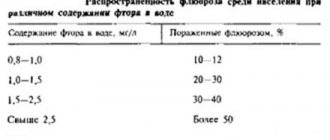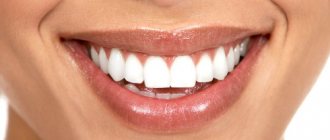Pain under the eye may indicate an ophthalmic disease.
In this case, it is accompanied by a burning sensation, profuse lacrimation, swelling and double vision (diplopia), blurred vision, decreased visual acuity, dryness and itching.
Occurs at rest, when pressing or blinking.
The causes of pain near the nose under the eye are varied - from mechanical effects (trauma) to purulent osteomyelitis. To determine the cause of the condition, the help of an ophthalmologist, otolaryngologist, neurologist and other specialized specialists is necessary.
Causes and symptoms
Pain can be caused by various reasons, which are characterized by certain symptoms:
- Osteomyelitis (according to ICD 10, M86). It is a consequence of advanced dental disease. This is, first of all, inflammation of the bone, which gives a high temperature. Osteomyelitis (according to ICD 10, M86) can spread to absolutely all elements of hard tissue, as well as to spongy and compact substance and even to the periosteum.
- Mechanical injury. It may be associated with bruises or a fracture of the facial bone. Upon palpation, a person feels severe pain. The site of injury becomes blue and swells.
- Neuralgia, which affects the nerves located in the facial area. We are talking about the trigeminal, glossopharyngeal, facial and hypoglossal nerves. A person’s facial expressions may be disturbed, facial asymmetry may arise, and, in addition, the bone on the cheek under the eye may hurt. Shooting along with twitching usually accompany trigeminal neuralgia. It can shoot at the neck, ears, shoulders and temples.
- Vascular eye disorder. It causes sharp pain around the eye sockets, pain and tearing are also possible. Weak and, in addition, damaged vessels supply blood to the eye area very poorly, which is why similar symptoms appear.
Pain under the eye
Pain under the eye is not only an unpleasant sensation, but also a signal about the presence of some pathological process. Pain in the area of the orbit or facial bone is not a harmless symptom. Many people reassure themselves with the thought that this is a cosmetic problem, but in reality this is not the case and a qualified specialist will help to understand the causes of pain around the eye.
Most often, an unpleasant symptom indicates eye diseases. Under no circumstances should you put pressure on the eye itself, as this can seriously harm you. Don't forget that what helped someone else doesn't necessarily help you. Ophthalmological disorders require an individual approach to the matter, otherwise you will only waste time.
Pain under the eye, depending on the main cause of its occurrence, is accompanied by various symptoms: dryness, blurred vision, itching, burning, excessive tearing, double vision, tremor, swelling and others.
Painful sensations can appear as a result of exposure to both external and internal stimuli. Dust, pollen, somatic diseases - all this and much more can cause discomfort. Pain caused by external irritants is usually much easier to cope with; to do this, you need to rinse the eye and apply special drops.
If the discomfort was caused by internal reasons, then first of all it is important to find out the type of pain; it can be acute, dull, chronic, periodic, etc. Discomfort can appear at rest, when pressing or trying to move. Why might this be?
If you have pain under your eye for several days, consult an ophthalmologist. Once again, do not irritate your eyes by touching them.
Causes of pain under the eye
The eyes are perhaps the most sensitive organ of our body.
The state of this paired organ can be affected by a variety of pathological processes developing in our body: vegetative-vascular dystonia, arterial hypertension, neoplasms, colds and more.
In all cases, pain under the eye is not the main process and therefore does not require treatment. The unpleasant symptom will go away on its own when the underlying pathology is eliminated.
Mechanical injury
Bruising in the area of the eye, nose and cheekbones causes severe pain, the occurrence of which can be reduced by cold. If you have an abrasion and bleeding, then you need to treat the wound surface with a solution of hydrogen peroxide.
A bruise is indicated by pain under the eye, which is accompanied by bruising and swelling of the tissue. When a swelling appears, it is not enough just to remove it, the presence of a fracture or crack in the facial bone should be excluded. In this case, radiography will help.
Osteomyelitis
Purulent inflammation of the bone can provoke aching pain under the eye, which radiates to the cheekbones and ear. Often, osteomyelitis is the result of untimely treatment of diseases of the teeth and gums. In this case, the treatment is carried out by the dentist.
Vascular disorders
What is accommodative asthenopia
If there are problems with the blood vessels around the eyes, pain can occur both under the eye and near the eyebrows. Patients may also complain of pain in the eyes. Painful sensations are provoked by poor supply of the eye with problematic blood vessels. In this case, patients are recommended to consult a cardiologist and ophthalmologist.
Severe pain can also be caused by glaucoma, which is caused by increased intraocular pressure.
The disease causes discomfort around the eyes, around the eyeballs, and in the temporal or occipital part of the head. All this is accompanied by deterioration of vision. Patients also complain of nausea and general weakness.
In this case, the eyeball is extremely sensitive and should be especially protected from various types of irritants.
Load on the eye muscles
Spending a long time at the computer, watching TV, reading books - all this can cause increased fatigue. Patients begin to complain of pain, cramping and fatigue.
If you spend a long time in front of the TV, pain in the eye area can become chronic.
In order to avoid increased fatigue, it is important to adhere to the rules of visual hygiene, which includes the following:
- If your job involves spending long periods of time at the computer, be sure to take breaks. The eyes should rest; to do this, sit for a while with your eyes closed, you can put your palms on top. It is also useful for training the eye muscles to alternately look at objects located near and far. With your eyes closed, try to draw a circle, a square, and various lines.
- A proper daily routine includes adequate sleep. You can’t stay up until midnight at work; your eyes get maximum rest at night.
- Sufficient lighting. Working in low light is very harmful to the eyes. Don't forget, the lighting from the computer is not enough. As for schoolchildren, when writing, right-handers should have the light source on the left, and left-handers should have the light source on the right.
Infectious processes
There is a direct anatomical connection between the eyeballs and the paranasal sinuses. Infectious agents from the nasal cavity can easily penetrate the visual organs.
Pain of an infectious nature is often shooting or throbbing. If pathogenic microflora has penetrated to the back wall of the eyeball, pain appears at the slightest movement of the eye.
This is due to the fact that there are a large number of nerve endings located there.
Herpetic lesions can cause inflammation of the trigeminal nerve, manifested by acute pain. Even banal caries can cause the spread of an infectious process to the visual organ.
Pain appears in various parts of the eyeball: conjunctivitis causes tearing, itching and suppuration, uveitis causes pain when moving the eyeball and aching.
Infectious diseases are a common cause of pain under the eye.
Trigeminal neuralgia
The pathology causes acute painful sensations. People over forty are at risk. Women are more susceptible to the disease. At first, patients think that they have problems with their teeth. The pain is so severe that it radiates to the upper and lower jaw. Talking, laughing, brushing your teeth - all this can trigger another attack.
Inflammation of the paranasal sinus (development of sinusitis)
When the bone under the eye hurts, the pain is also caused by an inflammatory process caused by viruses and bacteria (that is, sinusitis). Among bacteria, the most dangerous and common provocateurs are Staphylococcus aureus. The disease can develop due to infection of the respiratory canals, as well as with advanced dental problems (due to deep caries and periodontitis). The following people are considered at risk:
- with a crooked nasal septum;
- with the presence of congenital defects in the structure of the nasal cavity;
- with nasal injuries.
And then we will look at the symptoms and treatment of sinusitis in children and adults.
Useful video
First aid for eye injury. Algorithm of actions before contacting a specialist.
Author's rating
Author of the article
Alexandrova O.M.
Articles written
2100
about the author
Was the article helpful?
Rate the material on a five-point scale!
( 2 ratings, average: 5.00 out of 5)
If you have any questions or want to share your opinion or experience, write a comment below.
Root Causes
When the bone under the eye hurts, it is necessary to look for the root causes of fluid stagnation in the paranasal area and nasal cavity.
It could be:
- Allergic reaction to dust, wool, chemical components, fluff and nutritional products containing irritants.
- Presence of sinus deformation due to trauma. In addition, the cause may be a curvature of the nasal septum along with a displacement of the jaw, an abnormal structure of the shells and improperly fused bones of the skull.
- Viruses that have entered the sinuses. They can provoke fluid secretion along with narrowing of the canals and swelling. If bacteria are also added to them, then improper therapy causes resistance to antibiotic drugs.
- The appearance of fungi settling in the sinuses, which cause mycosis. The severity of this disease depends on the type and aggressiveness of the fungus.
- Cold air. It can constrict blood vessels, and oxygen will not flow into the orbit of the eye in sufficient quantities, which sometimes provokes the feeling that the facial bone under the eyes hurts. In addition, the cause of discomfort is dust and air pollution.
- With vitamin deficiency, the immune system suffers. A weakened human body cannot resist attacks from pathogenic microorganisms, which is why a runny nose often develops, and then its complications.
- Hypothermia. With it, the body's protective functions weaken. The respiratory organs are the first to suffer infectious blows. If a person can hardly tolerate the cold, then in the autumn and winter he will suffer from rhinitis.
Symptoms and treatment of sinusitis in children and adults are interrelated.
Next, we will take a closer look at the pathologies occurring in the paranasal sinuses, which are classified as inflammatory processes.
How diseases manifest themselves
Bone pain under the eye occurs in various pathologies, which are accompanied by certain symptoms:
- Rhinitis is accompanied by nasal congestion, from which clear fluid is released (and even flows at the height of the disease). A person's nasopharynx is sore, there is movement and itching. The eyes usually turn red. Tearing with sneezing is possible.
- Ethmoiditis is characterized by a condition where the bone under the eye hurts when you press on it. In the morning, phlegm may be coughed up, and viscous yellowish and green discharge from the nose is observed. They have an unpleasant putrid odor. Swelling in the eyelid area is possible. The sinuses under the eye also hurt. Patients suffer from dizziness, lacrimation, and, in addition, photophobia.
- With sinusitis, the bones of the face under the eyes hurt. People lose their sense of smell, purulent and sometimes bloody discharge appears from the nose, in addition, the voice becomes rougher and significantly deeper, and breathing, in turn, becomes difficult. If sinusitis develops, there may be a risk of inflammation in the cranial cavity. The chronic form serves as a source of infections, provoking relapses of osteomyelitis, tonsillitis, pharyngitis and rhinitis, among others. Acute sinusitis sometimes affects the trigeminal nerve. In this case, people experience severe pain in the facial area.
- With frontal sinusitis, the eyes, forehead and temples hurt most often in the morning. Breathing may be difficult, and thick discharge (even crusty) may appear from the nose. The temperature increases, the eyelids swell, and, among other things, there is pain in the eyes.
- Sphenoiditis is characterized by prolonged pain in the area of the back of the head and crown. Even the use of analgesics does not relieve the painful symptom. It may hurt under the eye when pressed, and vision deteriorates somewhat. Patients feel weak and unwell. You may feel discomfort in the nasopharynx.
In acute forms of these diseases, people may develop a fever, and in addition, they often experience dull headaches and a stuffy nose. In chronic forms, the symptoms are not so pronounced, but getting rid of them is very difficult.
Next, we’ll talk about what kind of diagnosis and treatment is carried out when pain of this nature appears.
What are cheekbones?
Cheekbones are paired bones that are located on the face of any person. They are an integral part of the maxillofacial apparatus, without which it would not be able to function normally.
It is the cheekbones that are responsible for supporting the eyes, they absorb the pressure of the upper jaw and take part in the process of chewing food.
If they hurt, then such a symptom cannot be ignored, otherwise you may miss a dangerous disease.
Cause of pain #1: dental disease
Painful sensations can be felt in the cheekbone even when there is ordinary caries or pulpitis, periodontitis, stomatitis or alveolitis resulting from tooth extraction. After all, all the organs of the maxillofacial apparatus are located dangerously close to each other.
The photo shows inflammation of the hole after tooth extraction, which can cause pain in the cheekbone
It’s worse when a simple dental disease remains untreated for a long time and the infection begins to spread further, reaching the zygomatic area of the face.
Then your cheekbones may already hurt from a more serious pathology - osteomyelitis.
The disease affects the bone tissue of the jaw, causing suppuration and necrosis, accompanied by a general deterioration in health, body temperature rises, and the face may become swollen and deformed.
“Osteomyelitis of the upper jaw is observed in medical practice much less frequently than the lower jaw. However, the disease is considered very dangerous because
its untimely or incorrect treatment can lead to a broken jaw, sepsis, damage to internal organs, pulmonary failure, and phlegmon.
Therefore, it must be treated surgically, additionally use anti-inflammatory therapy, antibiotics, treat neighboring organs affected by the pathological process and remove the affected teeth,” explains Tsorieva E.O., therapist, surgeon.
Osteomyelitis comes in different types: traumatic, radiation (occurs against the background of the appearance of malignant cancerous tumors), hematogenous (infection enters through the blood from neighboring affected organs). But most often the disease is odontogenic in nature, i.e. is a consequence of advanced caries, pulpitis and other dental problems.
Cause of pain No. 2: perforation of the bottom of the maxillary sinus
You will be interested to know that the cause of severe pain in the cheekbone area, wings of the nose, temples and eyes can be due to poor-quality or unprofessional tooth extraction, installation of implants in the upper jaw or due to poorly performed sinus lift (an operation to increase the missing volume bone tissue).
The fact is that such serious procedures can only be trusted to be performed by experienced doctors, whose experience in this field is confirmed by numerous official documentation and patient reviews. Otherwise, you risk encountering difficulties. Moreover, the longer you wait and do not get rid of the consequences of improper treatment, the more severe the complications will be:
- sinus injury: after the loss of teeth in the upper jaw, the bottom of the maxillary sinuses gradually descends, because The jaw bone here is quite thin and, due to lack of load, begins to quickly atrophy; accordingly, there is always a risk of injuring the sinuses. For example, they can be damaged if the implant model is incorrectly selected, if the location of its installation in the bone is incorrectly determined, if preparation for treatment is not carried out thoroughly,
- chronic sinusitis: inflammation in the sinus area is not in vain for the patient, and violation of work technique during osteoplastic surgery or dental implantation can lead to such consequences,
- meningitis and infectious diseases of the brain, inflammation of the jaw bone, the occurrence of abscesses,
- peri-implantitis, implant displacement and rejection.
Perforation of the bottom of the maxillary sinus can cause this symptom
“Today, methods of zygomatic dental implantation are gaining popularity. They allow patients without teeth, but with extreme atrophy of bone tissue in the upper jaw, to leave the clinic with a new smile in an extremely short time. The protocols involve the use of special models of implants that are installed directly into the zygomatic bone of the upper jaw.
Work with them must be carried out with extreme caution and precision; the doctor must first plan all treatment in advance and work out possible risks. Otherwise, the patient has every chance of suffering severe complications - damage not only to the zygomatic bone, but also to the maxillary sinus,” says V.A. Put.
, work experience - 27 years, implant surgeon, who was one of the first in Russia to start using zygomatic implantation in practice.
Cause of pain No. 3: arthritis or arthrosis
These diseases cause damage to the joints and inflammation of the cheekbone is no exception. What additional symptoms can you feel with these pathologies:
- pain and spasms: with arthrosis, pain will only occur in response to irritating factors and physical activity. For example, when chewing food or when talking, when yawning and opening the mouth. With arthritis, it does not go away even in a calm state and often makes people nervous at night. Please note that in such cases not only the cheekbones will hurt, but also the jaws,
- crunch: you can hear how your joints on your face begin to click and make characteristic sounds when you open your mouth,
- Swelling: The affected area may be swollen, which will naturally affect your appearance. For example, in some cases there is facial deformation.
“My mother actually had this disease - arteritis, something like inflammation of the facial artery. It can easily be confused with arthritis or arthrosis, but it is completely different.
And by the way, before she went to the doctor, she said for a long time that it hurt only on one side - the left cheekbone on her face. Only then did the pain begin to radiate to all parts of the face and nothing was clear: the eyes hurt, and the teeth, and the lower jaw, and the nose and around the lips.
The doctor then said that it is very dangerous to ignore such a pathology, because it could end in a cerebral hemorrhage!”
Rita, 32top.ru
Joint problems can cause pain
If you have developed arthrosis or arthritis of the cheekbone, then treatment can be carried out by a general practitioner, surgeon, orthopedist or rheumatologist.
Ointments, injections, physiotherapy, and sets of gymnastic exercises aimed at strengthening joints and developing their elasticity help get rid of the problem.
Also, during treatment, the patient must adjust the diet, avoiding too harsh foods, limit physical activity, and avoid stress and hypothermia.
Cause of pain No. 4: neuralgic diseases
What pathologies can manifest themselves in this way:
- damage to the ternary nerve: facial neuralgia almost always occurs against this background. After all, the ternary nerve carries impulses to all parts of our face and extends to the eye, maxillary and mandibular region. Damage to the triangular nerve can occur for a variety of reasons. Starting from an unhealthy lifestyle, the occurrence of constant colds and stress, ending with incorrect dental treatment, unprofessional installation of implants or traumatic tooth extraction,
Damage to the triangular nerve can occur for a variety of reasons. - Charlen's syndrome: the disease is also called neuralgia of the nasociliary junction. Here the pathology can be determined by the corners of the eyes. In them, patients usually feel particularly sore, which manifests itself even during the night hours of rest. When pressing on the corners of the eyes, the pain will intensify,
- Sluder syndrome: the upper jaw always hurts here, mainly near the base of the nose. All this is accompanied by inflammation of the nasal mucosa, increased secretion of secretions, salivary fluid, and lacrimation. You can also replace facial swelling,
- Frey's syndrome: pain is localized near the ears and temples,
- neuralgia of the ear or facial nerve: pain in this case is almost always localized under the cheekbones and radiates to the head, and the patient experiences long-term, persistent migraines. In this case, your condition may worsen with the appearance of nausea, pain in the eyes, and tinnitus.
Carrying out diagnostics
When the bone under your eye hurts, you shouldn’t hesitate. In case of alarming symptoms, the patient should definitely contact a therapist or otolaryngologist. The specialist will certainly give a direction to do a nasal culture. In addition, certain studies are shown:
- Performing endoscopy of the paranasal sinus.
- Performing ultrasound diagnostics.
- Taking x-rays of the lateral and frontal areas of the face.
- Performing computed tomography.
- Carrying out magnetic resonance imaging.
Only immediately after receiving the result can the doctor understand why the bone under the eye hurts.









